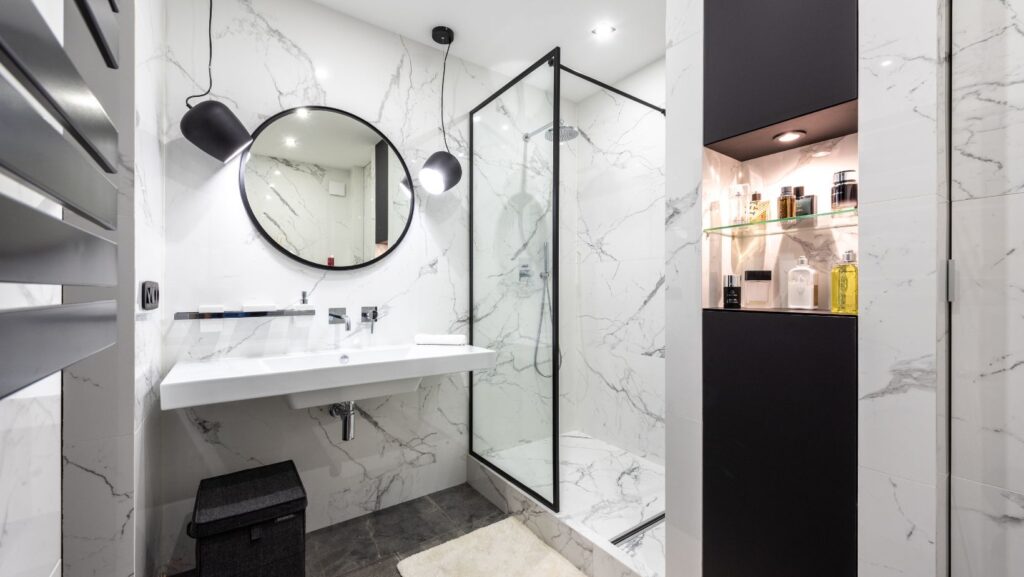A Custom lighting design scheme may do wonders for your home’s aesthetics and overall look. With enough planning and creativity, your home’s lighting may become one of its best places to relax and create beautiful memories. Here’s a fresh strategy for creating a custom lighting design that serves a practical purpose.
Paint A Picture Of The Vibe In Each Space.
Before choosing fixtures, consider the mood you want to create in each room. From ease and tranquillity to focus and output, lighting affects it all. Take this case in point:
Most homes’ focal point is the living room, where family and friends gather to socialise, relax, and occasionally work. Reading lamps, ambient ceiling lights, and other forms of illumination are likely necessary.
Clear, bright lighting may help the kitchen maintain its practicality while making it feel more inviting. Task lighting under cabinets may be useful for preparing supper, and a stylish chandelier over the island could be the finishing touch. Your bedroom should be a sanctuary. You may feel more at ease and relaxed in a setting with lower illumination. For a more calming night’s sleep, try a warm-bulb nightlight.
Think About The Accent, Task, and Different Layers
Layering is the main task in getting great lighting. By including various light sources, you can give a room a more complete feel and make it suitable for daily activities.
Overhead lights that shine uniformly over the space provide the most ambient lighting. Chandeliers, recessed lighting, and ceiling-mounted fixtures are all possibilities for ambient lighting.
Adjust The Lighting To Create The Perfect Vibe.
Using dimmers, you may adjust the illumination of a space to suit your needs, the current situation, or the mood you are going for.

One way to establish the mood for dinner parties or casual family gatherings is to use dimmable lighting in the dining area.
Electric light bulbs, even LEDs, may last longer and use less energy if used with a dimmer. This allows you to change the room’s ambience without touching light switches or bulbs.
Choose the Right Light Bulb Temperature and Color
Lighting has a greater impact on mood than you might imagine. Here is an easy way:
White with a warm undertone is ideal for rooms you want to make feel cosy and welcoming, such as bedrooms and living rooms. Warm whites fall on the Kelvin scale between 2,700 K and 3,000 K.
Cool white, around 4,000K, is ideal for high-traffic areas like kitchens and bathrooms because it is slightly brighter and more concentrated. This brilliant, bluish light (5,000K-6,500K) is perfect for spaces that demand high visibility, such as garages, workshops, or home offices. Setting different room temperatures may make each space more distinct and functional.
Accent Lighting Cannot Be Neglected.
Decorative lighting is one of the best examples of where the form is as important as the function it serves. Opulent lighting can be anything from a grand chandelier to a sculptured floor lamp or even a wall sconce, giving an antique look. While task or ambient lighting can be functional, decorative lighting often has no actual function but does add to the home’s worth.
A chandelier or pendant light can be useful and beautiful in the foyer or dining area of the house. Various wall sconces, antique bulbs or candlelight could turn a place into a charming nest. Another aspect of lighting is that the decorative lighting also contributes to texture and colour. An example is a stained-glass chandelier or a bronze floor lamp that would give the space a better look.
Smart Lighting Gives You More Control
Smart switches and light bulbs make it easy to control the lighting in your home. Would you like to lower the lights without getting out of bed? Or would you like to manage your lighting from anywhere with just your phone? Thanks to smart lighting solutions, it is all within reach.

Most smart bulbs come with options to control the colour temperature and intensity so you get warm light during the day and soft light at night. Another feature of smart lighting is the ability to link your smart lighting system to voice assistants, including Siri, Google Assistant, or Alexa, to control your lights using your voice. This is one of the cheapest options; you can switch on and off as often as you want.
Prominent Features of the Building
Just imagine illuminating architectural details in your home to draw attention to them. Fireplaces, built-in bookcases, and exposed rafters are some features that can benefit from uplighting. Recessed lighting in niches creates a soft, inviting light that draws the eye without flooding the space.
By lighting a wall in a sequence, fixtures pointed at specific elements can create a wall-wash effect, which increases the space’s dimension and drama.
Conclusion
Apart from aesthetics, the main target of custom lighting design is to create a living atmosphere that can improve your daily routine and make every moment at home more joyful. From the colour temperature of your lightbulbs to the placement of different types of light, every decision you make impacts the atmosphere and usability of your area.
.
